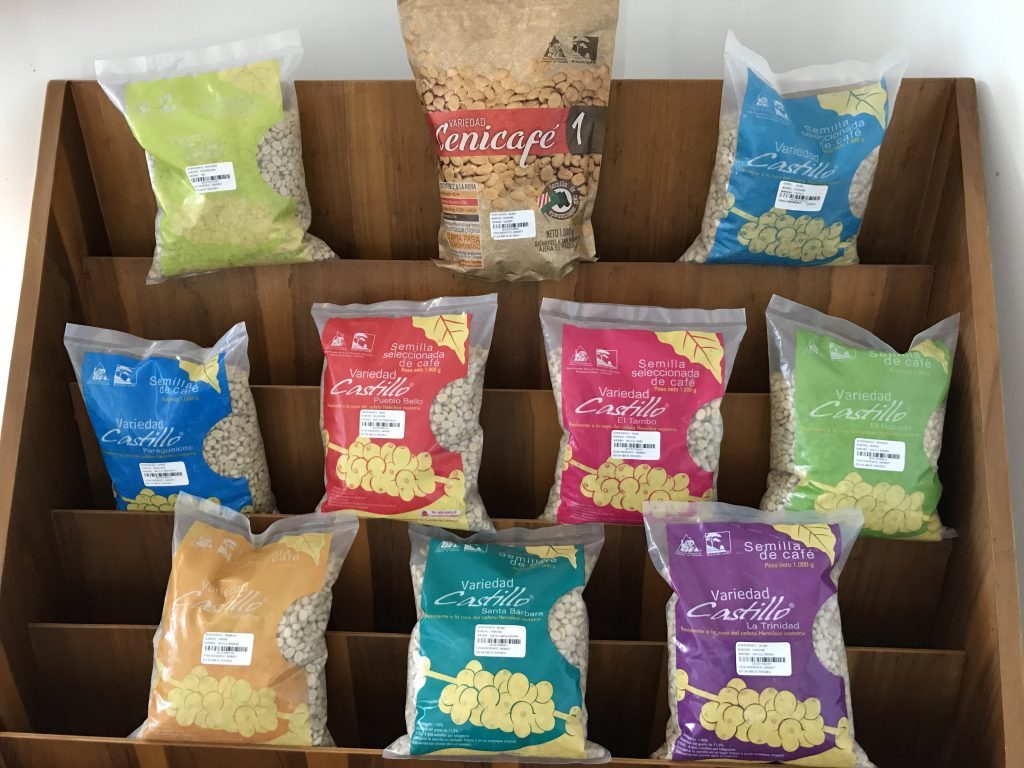
Photo: Royal Coffee
What do you imagine the work of World Coffee Research looks like?
Equator Coffees and The Crown played co-host to a pair of recent events where Greg Meenahan, WCR’s Partnership Director, presented data on sustainability and the progress made with the organization’s help.
WCR is just a few years old, established in 2012, has about 30 employees, and manages millions of dollars dedicated to coffee science.
What they’ve dedicated their resources to, however, remains as complex as it is interesting.
For most roasters who are aware of WCR, the most apparent work they are involved in has been the creation of the sensory lexicon (whose easy-to-repeat recipes make trainings, like many I’ve lead, easy to prepare) and the development of new plant cultivars. Their online variety catalog, while not all-inclusive, does contain well-researched information on many common plant types and was a huge resource from which I drew inspiration an easy-to-follow cultivar catalog.
WCR partners with many research groups across the world. While there are indeed many scientific minds actively doing research on their staff, WCR is heavily involved in organizing international trials, but not necessarily directly involved in their execution.
For example, one of their large current projects is called the International Multilocation Variety Trial. The project involves 11 coffee tree/seed suppliers, 23 countries, and scores of farm plots and agronomists. Most trees were planted in 2015-2016 and are just now yielding their first real harvests; the project by its very nature is long-term, attempting to establish repeatable, definitive data on yield and quality as these metrics relate to plant type, fertilization schedule, and many other variables. Yet relatively few of the people doing the work day-to-day are in fact WCR employees; rather WCR established the experiment and organized its structure and then uses its partners in countries of origin like Mexico, Kenya, and Indonesia to execute the groundwork.
Yet WCR has also been heavily involved in more behind-the-scenes research which has garnered less immediate attention. The mapping of the arabica genome was a major scientific breakthrough supported in part by WCR. Ongoing research related to this continues under WCR’s guidance. The rust fungus genome is also being mapped currently, with hopes to provide better understanding of the predator and how to prevent it in the future. You can see a list of their work here: https://worldcoffeeresearch.org/work/
Yet the thing that continues to capture the most attention, and the project to which Meenahan devoted the bulk of his time at The Crown discussing, was the development and dissemination of F1 Hybrid coffee plants.
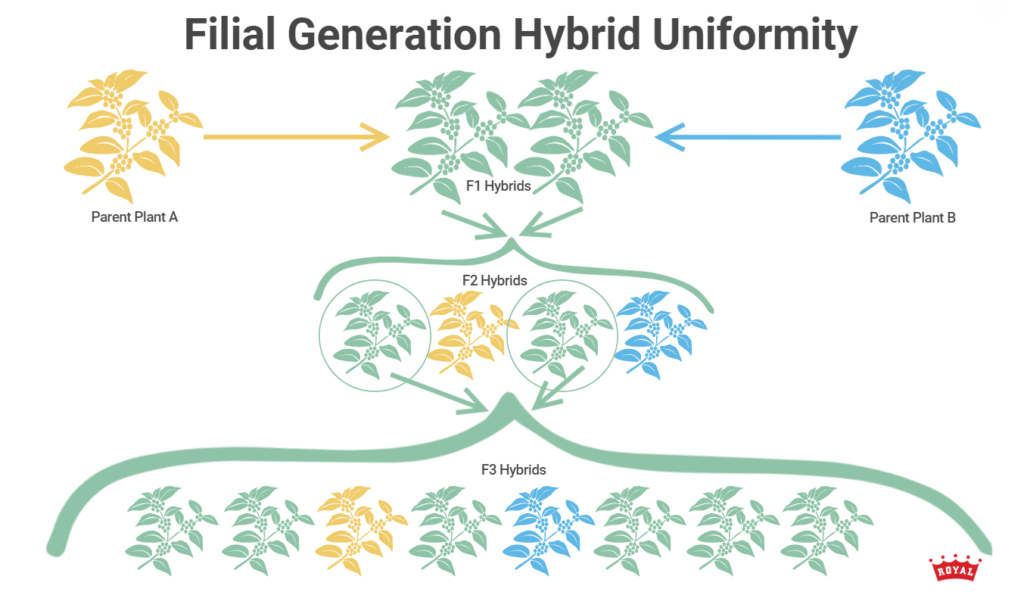
Photo: Royal Coffee
F1 stands for “first filial” generation, meaning that the plant is the direct first offspring of two different plant types. Centroamericano variety, for example is an F1 of a cross between a Sarchimor and a Sudan Rume. F1’s have a number of distinctive characteristics. Desirably, an F1 generation can be produced fairly quickly, and will exhibit very strong “hybrid vigor” (which means that they can be more productive and more disease or climate-resistant than their parents). Unfortunately, even a self-pollinated F1 won’t result in identical offspring – rather, F1’s must be reproduced by cloning, which is far more expensive than traditional breeding.
WCR has assisted in a breakthrough in this field as well, identifying the gene for “male sterility” in coffee plants. It sounds like a detriment, but in truth it’s a benefit when breeding hybrids – it prevents self-pollination. It means that manual pollination is now possible on a large scale for breeding F1s, which can increase the ability to produce F1 seeds for distribution and decrease the cost compared to cloning.
Yet the cost still remains high compared to traditionally produced cultivars, and the inability for a farmer to obtain true stock from the seeds of an F1 ties them to a supplier to provide it, or else the offspring, if planted, will revert to non-vigorous traits. Both the expense and education associated with F1 plants can be challenging barriers to entry, especially in the current market climate where the New York Coffee futures price is below the cost of production for many farmers.
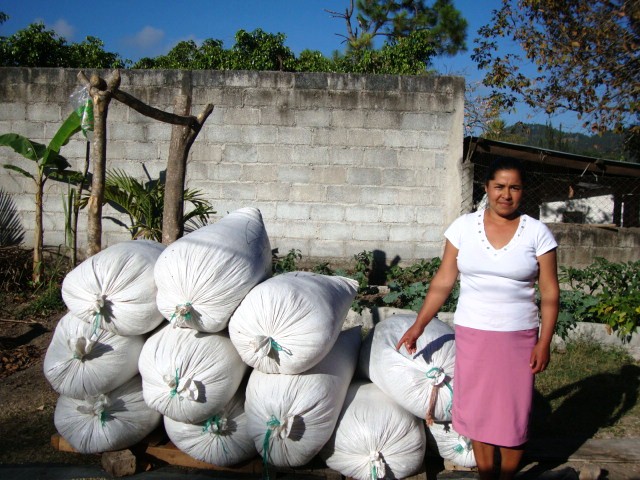
Photo: Royal Coffee
Mayra Orellana-Powell, Royal’s Marketing and Outreach Director, and the Founder and Director of the Catracha Coffee project in Honduras, raised a red flag in a question sent via email before the event.
With current coffee prices, farmers in Central America are not assisting their farms, and as a result farms are more susceptible to climate change effects. I’m still trying to understand why WCR keep modifying or creating new varieties and fail to mention that our industry needs to take care of farmers. The current situation in Honduras and other Central American countries is complicated, as families depend on coffee prices for their survival and cannot pay for labor. Hondurans living in coffee regions are not willing to work for $5 a day and would rather take the caravan to the US or Spain. People from Santa Elena [where Mayra lives and works] are also heading north.
What is WCR prepared to do for these farmers? Not much, as it turns out. Coffee farmers are in crisis, and WCR is working on research for the future, rather than attempting to address immediate concerns of insufficient funds for farmers to apply preventative measures to their trees or even hire labor for harvest.
The ugly truth is that we needed WCR’s work a decade ago. We’re running out of time.
The immediate solution involves paying farmers fairly for their coffee, particularly smallholders who are the most vulnerable and often don’t account for their own labor, for example, as part of the cost of production. That needs an immediate change. Farmers need financial support, both in terms of better prices, and the kinds of education it takes to run a fiscally stable farm.
Then, and really only then, can the farmer prepare to address the long-term, and it is this long-term prevention and production that WCR is directly prepared to improve. Unfortunately for many farmers, rigorous science is slow and crisis is now.
What can we do now?
Well, my colleague Jennifer Huber, Royal’s Director of Operations, recently revived an article with a ton of great short-term suggestions. Here’s the short version:
You, the roaster, can easily help with this side of things. We’ve mentioned it before, and at the risk of sounding like a broken record, I’m going to mention it again: Royal Coffee has set up an accounting system whereby you can elect to donate per pound 1¢, 2¢, 10¢, 20¢, or whatever you choose, to either the Coffeelands Foundation (which funds various organizations helping farmers at origin) or Grounds For Health (which provides access to cervical cancer screenings and treatments at origin). With coffee prices as low as they are now, maybe you can find some room in your budget for this tax deductible donation.
There is a growing segment of roasters (and importers) who are opting to bypass the ICE market for purchases, instead choosing to pay prices that correlate with the quality in the cup. Royal Coffee has an alliance with Catracha Coffee, which gives monthly educational seminars to its farmers along with profit sharing at the end of the harvest. Additionally, Royal pays well for these coffees, and with all of the extra attention the farmers put into their farms, roasters end up with a coffee that is ridiculously sweet and syrupy. We talk a lot about Catracha around here because we want you to feel the love that we feel for the project and share the respect we feel for the producers of Santa Elena. Of course, Royal buys many other microlots, and pays a premium for their stellar qualities, including, but certainly not limited to: Sulawesi Toarco Jaya Peaberry, Colombia Huila San Agustin, Colombia Huila Finca Buenos Aires, Ethiopia Yirgacheffe 1 Bedhatu Jibicho, Ethiopia Gedeb 1, Mexico Mayan Harvest, Rwanda Kivubelt, Timor-Leste Organic Ermera. This list is constantly growing.
You can also participate in WCR’s work by donating as part of the Checkoff Program. Anytime you purchase a coffee from Royal, you can donate an amount you choose, in denominations as small as ½ a penny per pound, directly to fund WCR. Royal collects the tally and sends it to WCR. It’s as easy as asking about it. As usual, chat with your trader for details on ways you can improve your impact with coffee farmers and scientific research.
Original post: https://royalcoffee.com/farmer-empowerment-world-coffee-research/



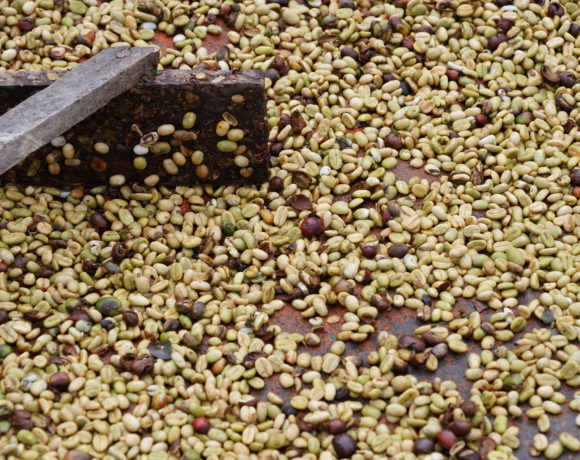
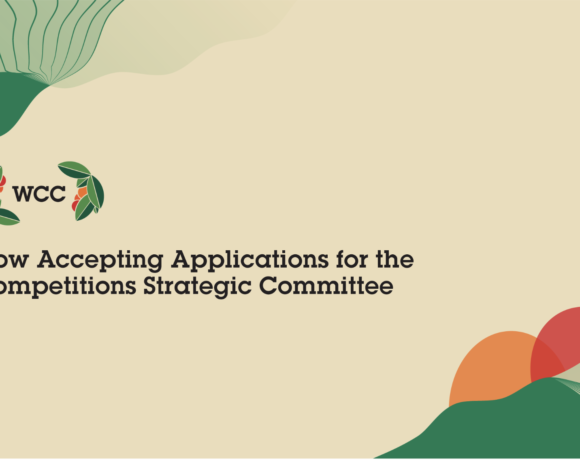
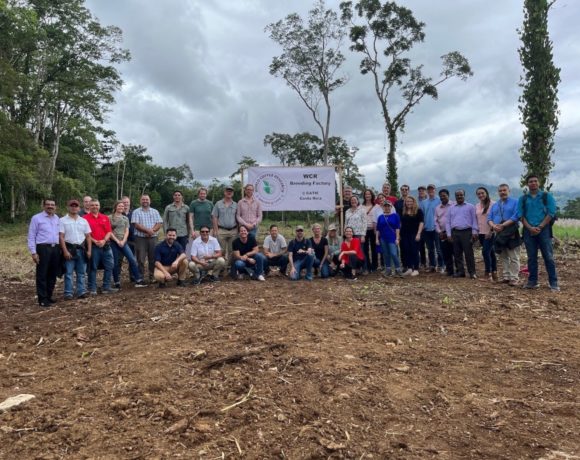






NO COMMENT